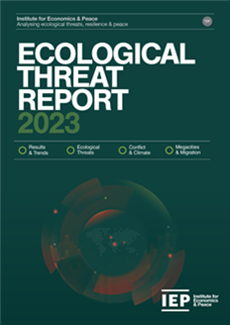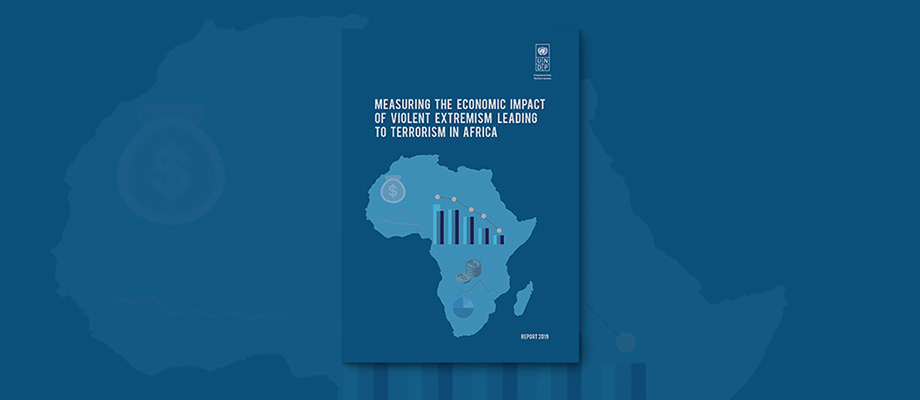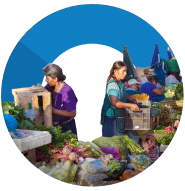Client: UNDP, Ethiopia
Background:
The fundamental purpose of this research is to produce a new body of evidence on the economic impacts and trends in these impacts of violent extremism in the UNDP’s 16 focus countries, including spending on counter-terrorism efforts, and how these impacts affect conditions of living for women and men.
Focus counties include countries include Nigeria, Tanzania, Central African Republic, Niger, Uganda, Kenya, Ethiopia, Senegal, Mali, Burkina Faso, Chad, Cameroon, Tunisia, Morocco, Mauritania, Somalia, Sudan and Libya
Research questions included:
What is the macro-economic impact of violent extremism in focus countries, and does this impact differ for men and women?
How has terrorism affected investment, economic growth, aid, and social spending in focus countries, and do these effects affect men and women’s living conditions differently
Is there a crowding out effect on social and development programs both from a domestic spend and foreign aid view point? How does this affect men and women’s living conditions?
What is the cost of combating the financing of terrorism programs, and how does this cost compare to the effectiveness of the programs to date? How does this cost affect the conditions of living for men and women?
Solution:
Research to generate empirical evidence from desk-based research and fieldwork that addressed the priority areas outlined in the ToR:
Extent to which violent extremism has affected investments and economic growth in the selected, with a specific objective to demonstrate if there were differentiated impacts on investments and economic sectors where men and women were active.
Impact on spending in the military and security sector and crowding out effect on social and development programs, including an analysis of the gender aspects of the impacts.
Assess the cost of Anti-Money Laundering/Combating the Financing of Terrorism (AML/CFT) with a focus on rapid money transfers and the impact on this cost on the living conditions for women and men.
The research design analysed evidence at a macro-level for all 16 focus countries of the UNDP’s “Preventing and Responding to Violent Extremism in Africa: A Development Approach”, and in addition analysed at a deeper level evidence in an epicentre country and a spill-over country.
This combined approach, using quantitative and qualitative data, will allow the development of a thorough body of research where the mechanisms underlying macro-level trends can be unpacked.
The fundamental approach to costing the economic impact of violent extremism will utilise and build on IEP’s methodology for the economic valuation of violence and violence containment: a cost accounting method developed and refined over a ten year period, which to date is the world’s leading assessment of the cost of conflict and terrorism.
Macro level statistics were collected and analysed from reputable data sources including the Global Terrorism Database (GTD), the World Bank (WB) and the International Labor Office (ILO). In addition in case study countries, statistics were collected from national statistical offices where applicable.
Qualitative data was generated during a field visit, through focus group discussions and semi-structured interviews.
The 16 countries of focus for the UNDP’s project on violent extremism formed the basis of the macro-level analysis and data collection, to the extent it was possible. In addition to this, the research will focus on two case-study countries – Nigeria, as an “epi-center” country, and Kenya as a “spill-over” country.
Nigeria and Kenya are strongholds of Boko Haram and Al-Shabbab, two of the largest and well resourced terrorist organisations in the world. Additionally, Nigeria is Africa’s largest economy, while Kenya ranks 9th in 2016, meaning that the magnitude of any economic impact from violent extremism is potentially huge with resulting implications for living conditions for their populations.
Outcomes:
IEP produced a 50 page report which highlighted key findings and policy implications, emphasising the need for integrated strategies to address the economic repercussions of violent extremism and promote sustainable development in the African context.
The study examined the impact of attacks on infrastructure and physical damage, formal and informal economies, and of 'security spending' on development processes. The report covered various aspects related to the economic consequences of violent extremism in Africa.
It examined the financial ramifications of terrorism on the continent, providing insights into the economic consequences resulting from acts of violent extremism. It also discussed the relationship between violent extremism and the formal economy, offering insights into how acts of extremism impact and interact with established economic structures on the continent.
The report explored the dynamics between expenditures on security and development, shedding light on the trade-offs and implications for economic development in the context of combating violent extremism on the continent.











